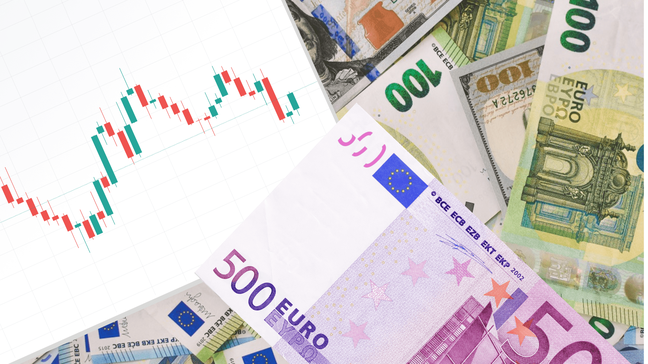EURUSD seesaws at a two-week high as the Fed’s favorite inflation gauge looms

Market sentiment remains slightly positive early Friday as downbeat US data and the Bank of Japan’s (BoJ) dovish halt joined upbeat earnings reports from Alphabet and Microsoft. Also contributing to the firmer risk appetite could be the absence of Sino-American tensions as US Secretary of State Antony Blinken visits China.
With this, the US Dollar remains pressured for the week despite the latest rebound while other major currencies and commodities, ex-Gold, grind higher. That said, EURUSD braces for the second weekly run-up while GBPUSD eyes the first weekly gain in three. However, USDJPY refreshes a multi-year high while posting a four-week uptrend.
AUDUSD and NZDUSD both snap a two-week losing streak while USDCAD eyes the biggest weekly loss, the second one in a row, since early December 2023.
Further, Crude Oil stays on the front foot but Gold price snaps a five-week march due to the market’s preparations for today’s US Core PCE Price Index, as well as the next week’s FOMC.
Equities remain slightly positive despite a downbeat closing of Wall Street whereas the US Treasury bond yields grind higher.
On a different page, BTCUSD and ETHUSD lack clear direction while staying on the way to posting a four-week downtrend as the US SEC challenges optimism on the crypto front.
Following are the latest moves of the key assets:
- Brent oil extends the previous day’s recovery to $89.15, up 0.20% intraday by the press time.
- Gold prints mild gains around $2,340 during a two-day winning streak.
- The USD Index braces for the first weekly loss in three despite being dicey near 105.60 at the latest.
- Wall Street closed with minor losses but the Asia-Pacific stocks edged higher. Further, European and UK shares remain slightly positive during the initial trading hour.
- BTCUSD and ETHUSD post mild intraday losses to around $64,500 and $3,150 as we write.
up to 200%

from 0 pips

Trading platform

US Dollar prepares for Fed inflation, FOMC…
The US Dollar Index (DXY) dropped to the lowest level in two weeks the previous day after the US first quarter (Q1) Gross Domestic Product (GDP) flashed downbeat readings. In doing so, the Greenback’s gauge versus the six major currencies failed to cheer upbeat prints of the GDP Price Index suggesting an escalating price pressure in the US. It’s worth observing that the pre-data consolidation allowed the DXY to lick its wounds early Friday.
That said, the first readings of the US Q1 2024 GDP growth came in at 1.6% versus 2.5% expected and 3.4% prior while the GDP Price Index grew 3.1% during the said period compared to 1.7% previous readings. Further, US Initial Jobless Claims dropped to a nine-week low while Kansas Fed Manufacturing Activity reported the lowest figures in three months. Additionally, the US Pending Home Sales jumped the most in 2024, reporting 3.4% MoM growth for March. Apart from the mixed data, upbeat comments from US Treasury Secretary Janet Yellen also restricted the US Dollar’s fall, after a heavy fall. Yellen said on Thursday, “US economy shows robust growth, firing on all cylinders,” while adding that there could be revisions to GDP data.
Although the downbeat US data weighed on the US Dollar, sour sentiment on Wall Street and firmer yields put a floor under the Greenback. The US equities closed negative due to the downbeat earnings blow from Meta while the US stock futures improved early Friday amid firmer results of Alphabet and Microsoft, published late Thursday.
While the US Dollar dropped on downbeat data, the Euro managed to grind higher as cautious optimism prevails in the bloc. Also underpinning the EURUSD pair’s two-week recovery could be the recent firmer data from the “Old Continent” and the hawkish remarks from the European Central Bank (ECB) officials. On Thursday, ECB Governing Council Member Fabio Panetta said that they must weigh the risk of monetary policy becoming too tight. However, ECB executive board member Isabel Schnabel stated that they may be facing a bumpy last mile on disinflation.
GBPUSD tracked EURUSD while bracing for the weekly gain, especially amid policymakers’ comments suggesting a delay in the Bank of England (BoE) rate cuts. Also underpinning the Cable pair’s run-up is the improvements in the UK’s GfK Consumer Confidence, to -19.0 for April versus -20.0 expected and -21 prior.
USDJPY jumped 70 pips to refresh a 34-year high above 156.00 on the Bank of Japan’s (BoJ) dovish halt. The BoJ kept its benchmark rates unchanged and showed readiness to increase the rates in the future, as expected. However, the BoJ statement omitted the mention of a likely reduction in the bond buying which could have suggested the Japanese central bank’s hawkish turn. Apart from the BoJ clues, softer prints of Tokyo inflation for April also underpinned the Yen pair’s run-up toward refreshing the multi-year peak.
AUDUSD braces for the biggest weekly gain since early December as inflation pressure builds in Australia, allowing the Reserve Bank of Australia (RBA) officials to defend their hawkish bias. That said, the Pacific major reported strong Q1 2024 Consumer Price Index (CPI) details earlier in the week before Friday’s upbeat Producer Price Index (PPI) figures for the said period.
Apart from the upbeat Aussie inflation clues, the risk-positive headlines surrounding China, Australia’s biggest customer, also underpin the AUDUSD pair’s run-up. That said, comments from a meeting between China Foreign Minister Wang Yi and US Secretary of State Antony Blinken came in positive and favored the sentiment. On Thursday, China’s Yi said, “(US-China) relationship has stabilized but negative factors are building.” On the other hand, US Secretary of State Blinken said that he hopes the US and China can make progress on agreements, citing fentanyl, military-to-military ties and AI risks. It’s worth mentioning that the Financial Times (FT) came out with news suggesting the US encouragement to European & Asia allies to tighten restrictions on chip-related technology in China, which in turn should have challenged the risk-on mood ahead of the key US data and prod the AUDUSD bulls.
On the same line, NZDUSD also benefits from the upbeat NZ data and China optimism, as well as a pullback in the US Dollar due to the softer US GDP.
Elsewhere, USDCAD prints the biggest weekly loss since early December 2023 as Canada’s key export item, namely crude oil, prints heavy gains and contrasts with the softer US Dollar, as well as benefits from hawkish comments from Bank of Canada (BoC) Governor Tiff Macklem.
Crude Oil remains firmer at the weekly high as the softer US Dollar joins a heavy draw in inventories and fears of a supply crunch due to the Middle East woes. It’s worth noting that the black gold is preparing for the biggest weekly gain in three.
Alternatively, Gold price fails to cheer the US Dollar’s weakness and prepares for the first weekly loss in six as the US Treasury bond yields remain on the front foot while expecting the Federal Reserve’s (Fed) hawkish halt in the next week’s FOMC. Also, mixed concerns about the US-China ties and the fears emanating from the Middle East allow the XAUUSD to better prepare for the Fed monetary policy meeting announcements.
- Strong buy: USDCAD, USDJPY, US Dollar
- Strong sell: AUDUSD, NZDUSD, GBPUSD
- Buy: BTCUSD, ETHUSD, Nasdaq, Gold
- Sell: DAX, FTSE 100, BTCUSD, EURUSD
US Core PCE Price Index will help determine Fed actions…
Having witnessed the BoJ-inflicted volatility early Friday, the momentum traders are likely to get bored during the European session amid a lack of major data/events except for the speeches from Swiss National Bank (SNB) and the ECB officials. However, the later part of the day will be interesting as the US Core PCE Price Index will portray the price pressure in the world’s biggest economy and help the Federal Reserve (Fed) to decide next week’s FOMC. Given the latest hawkish bias about the US central bank, a rejection of the likely softness in the inflation could help the US Dollar pare weekly losses and challenge the recent recovery of the commodities. However, downbeat inflation numbers will allow the Greenback to better prepare for the Fed’s hawkish halt.
May the trading luck be with you!
